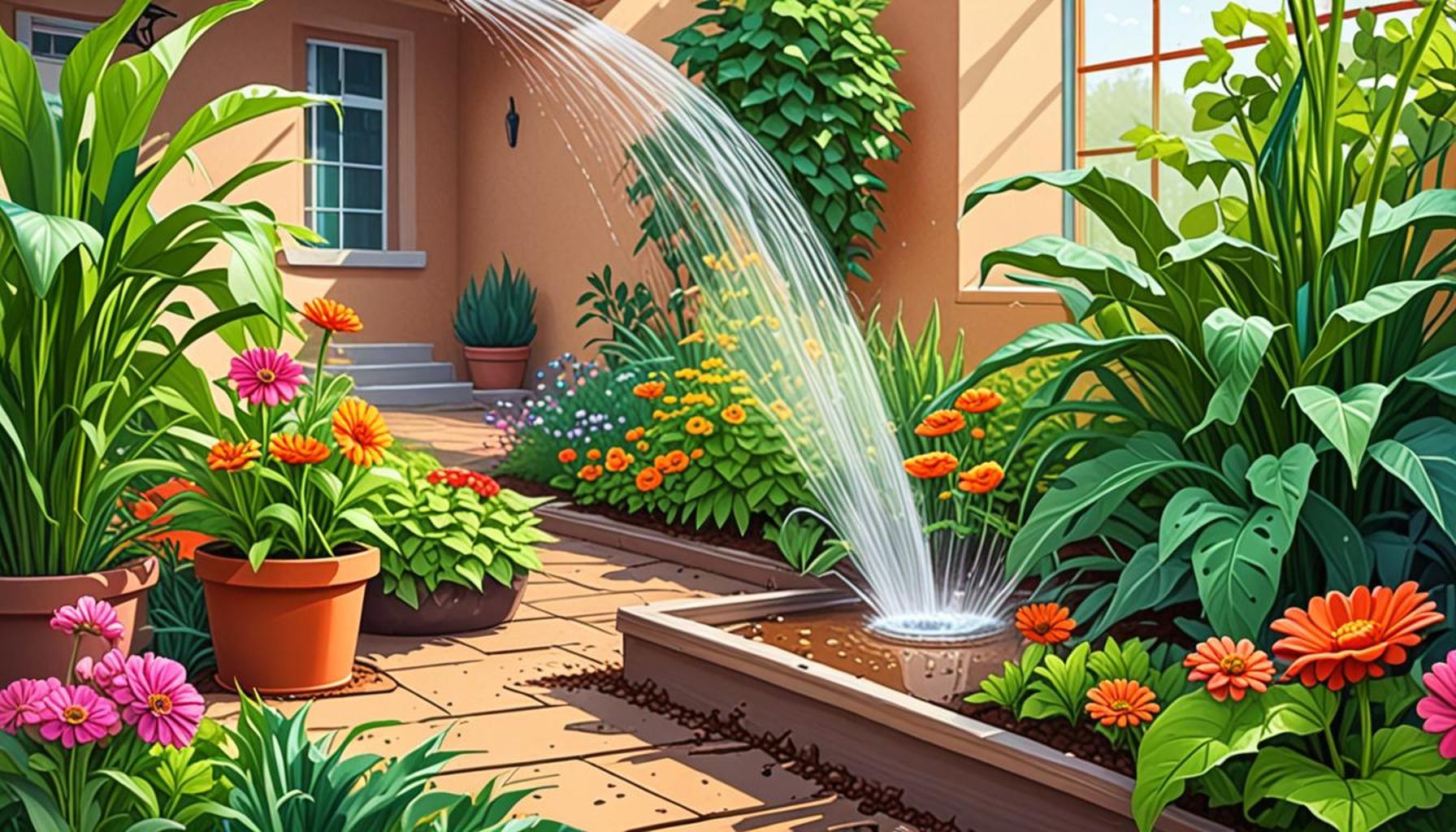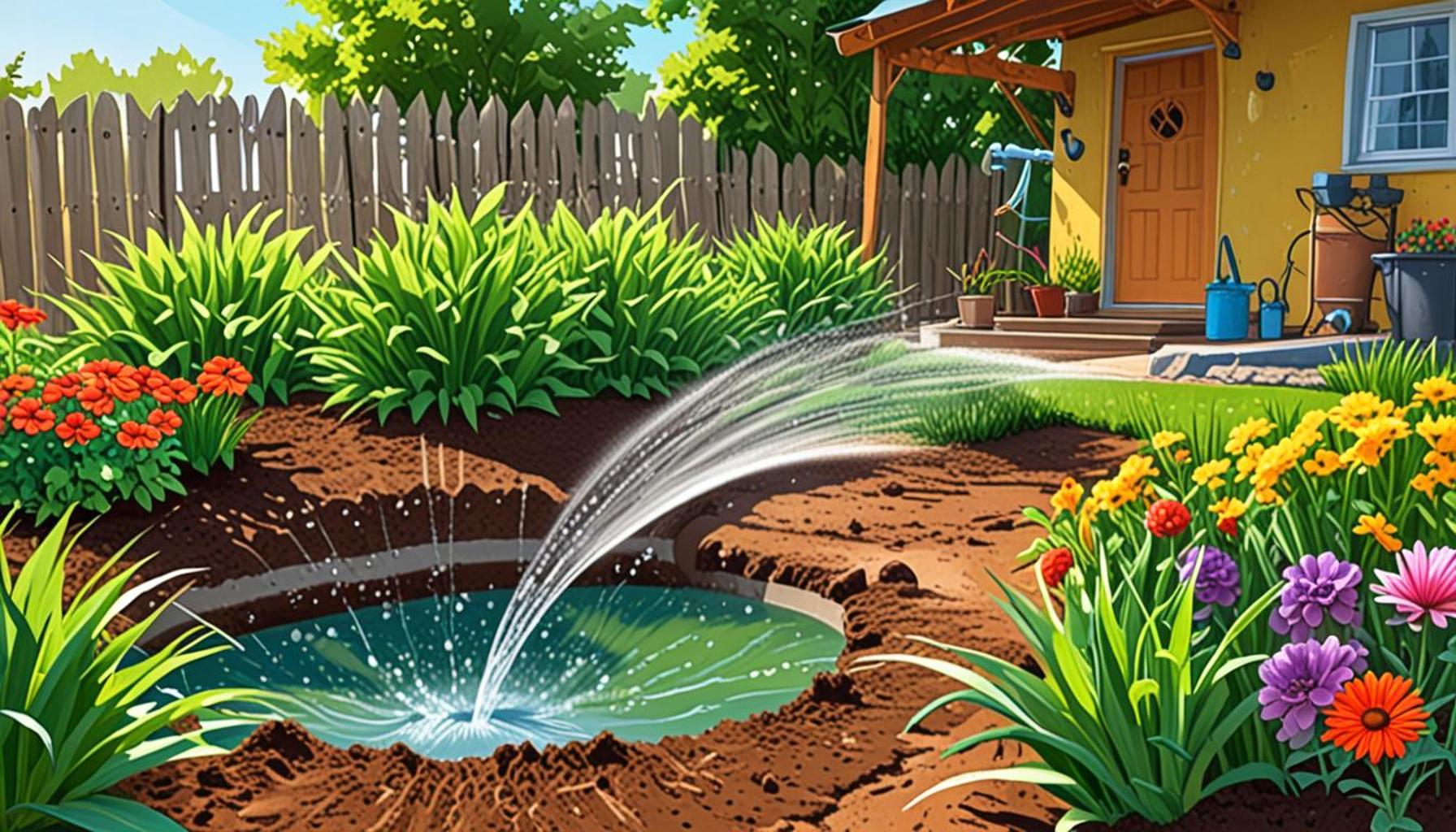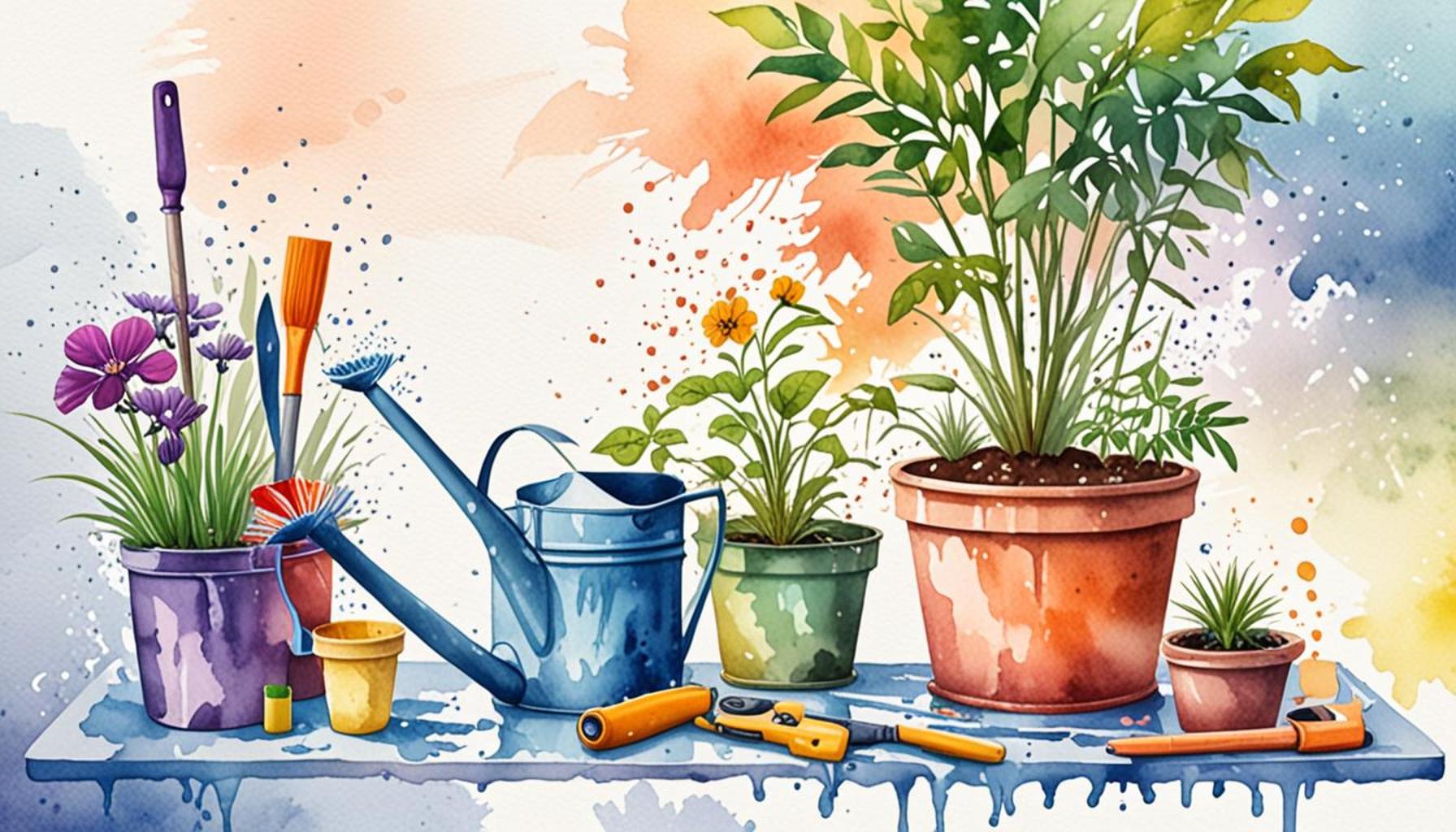Sustainable Irrigation Methods for Home Gardens: Tips for Beginners

The Need for Sustainable Practices
As the impacts of climate change and water scarcity become increasingly evident, sustainable gardening practices are gaining traction among environmentally conscious homeowners. Traditional irrigation methods can lead to significant water wastage through evaporation and runoff, leading to not only higher water bills but also exacerbating drought conditions. By embracing sustainable irrigation methods, gardeners can effectively conserve water while also supporting plant health and local ecosystems.
Exploring the Benefits of Sustainable Irrigation
Understanding the advantages of sustainable irrigation goes beyond merely saving water. Here are a few key benefits that stand out:
- Water Efficiency: Techniques like drip irrigation and rainwater harvesting are designed to minimize water waste. For instance, drip irrigation delivers water directly to the roots of plants through a system of tubing and emitters, ensuring that every drop counts.
- Cost Savings: By adopting these methods, homeowners can witness a notable reduction in their monthly water bills. According to the Environmental Protection Agency (EPA), efficient irrigation practices can reduce water usage by up to 50%—an attractive incentive for homeowners looking to control expenses.
- Healthy Ecosystems: Sustainable irrigation practices contribute to the health of local ecosystems. By managing garden irrigation carefully, you can create a haven for pollinators and beneficial insects, fostering biodiversity within your yard.
Methods to Consider for Your Garden
Implementing sustainable practices doesn’t have to be daunting. Here are a few methods that beginners can easily incorporate into their gardening routine:
- Drip Irrigation: This system is a game-changer for resource-efficient gardens. By applying water directly to the plants’ roots, it minimizes evaporation and ensures that the plants receive the moisture they need without excess.
- Rainwater Harvesting: Collecting rainwater is an environmentally friendly way to reduce reliance on municipal water systems. Homeowners can install rain barrels to capture runoff from roofs, which can then be used for garden irrigation—saving both water and money.
- Soil Moisture Sensors: These sensors take the guesswork out of watering. Equipped with technology to detect the moisture levels in the soil, they can automate watering schedules based on the plants’ needs, ensuring that gardens receive optimal hydration without overwatering.
Getting Started
Taking the plunge into sustainable irrigation may seem overwhelming at first, but the key is to start small. Select one method that resonates with your gardening style and goals, and gradually incorporate additional techniques as you gain confidence. By making informed decisions about how you water your garden, you not only enhance your gardening skills but also contribute to the larger goal of environmental conservation.
As we delve deeper into each of these methods in future discussions, remember that every step you take towards sustainability matters. Join a community of passionate gardeners who are committed to making a difference—one drop of water at a time.
DISCOVER MORE: Click here for natural soil enrichment tips
Understanding Your Garden’s Water Needs
Before plunging into various sustainable irrigation methods, it’s essential for beginners to understand the specific water needs of their garden. Different plants have varying requirements based on their species, growth stages, and environmental conditions. For instance, vegetables such as tomatoes and cucumbers are more water-intensive compared to drought-resistant plants like lavender or succulents. Taking the time to assess your garden’s layout and plant selection can drastically influence the effectiveness of your irrigation strategy.
For aspiring home gardeners, one of the first steps is to conduct a soil test. This analysis will provide valuable data about the soil’s water retention capabilities, drainage, and nutrient content. Many local extension services across the United States offer soil testing kits or low-cost tests, allowing gardeners to tailor their irrigation methods for optimum results.
Smart Watering Techniques for Beginners
Incorporating smart watering techniques can make a significant difference in conserving water and promoting plant health in your home garden. Here are some practices that beginners may find particularly beneficial:
- Watering Early or Late: To minimize evaporation, consider watering your garden during the early morning or late evening. This practice allows water to penetrate the soil deeply before the sun heats the ground, ensuring that your plants receive the moisture they need without superfluous loss.
- Mulching: Adding a layer of organic mulch around your plants can help conserve moisture by reducing evaporation from the soil surface. Mulch also suppresses weeds, which compete for available water and nutrients. Common organic materials for mulch include straw, wood chips, and grass clippings.
- Targeted Irrigation: For those who may not have the time or resources to install advanced systems, targeted watering can be an easy solution. Use a watering can or a hose with a nozzle to water individual plants or clusters, focusing on where it’s most needed. This way, you avoid soaking entire sections of your garden, which can lead to waste.
Getting to Know Your Water Source
Understanding your water source is another crucial factor in establishing a sustainable irrigation plan. Many homeowners in the United States rely on municipal water supplies, but there are alternative sources that can significantly reduce your dependence on these systems. Utilizing greywater, the water from baths, sinks, and washing machines, is a creative way to recycle water for your garden—provided it’s free from harmful chemicals and is safe for plants. Always check local regulations regarding greywater use, as they may vary by state.
Additionally, consider the feasibility of installing a rain garden or permeable paving to allow rainwater to filter back into the groundwater system. These practices not only support sustainable gardening but also prevent stormwater runoff, which can contribute to urban flooding and water contamination.
By taking the time to understand your garden’s unique needs and incorporating smart watering techniques, you’re setting a solid foundation for a sustainable gardening journey. Embracing these practices will not only benefit your plants but also contribute to the broader movement towards responsible water usage and environmental stewardship.
| Irrigation Method | Advantages |
|---|---|
| Drip Irrigation | Efficient Water Use: Directly delivers water to plant roots, minimizing evaporation and runoff. |
| Rainwater Harvesting | Cost-Effective: Reduces water bills by utilizing collected rainwater for irrigation, supporting sustainability. |
| Soaker Hoses | Uniform Water Distribution: Allows for even moisture to be delivered directly to the soil, promoting healthy plant growth. |
| Mulching Techniques | Water Conservation: Reduces evaporation from soil surface and helps retain moisture, decreasing the need for frequent watering. |
When it comes to sustainable irrigation, understanding the methods available can greatly benefit both your garden and the environment. Drip irrigation, for instance, outperforms traditional methods by ensuring that each drop of water is efficiently utilized at the plant root level, drastically reducing waste. Rainwater harvesting not only aids in conserving this precious resource but also helps in cutting down on costs. Similarly, soaker hoses offer an innovative solution by delivering water directly into the soil, promoting healthier plants and minimizing water usage. Lastly, mulching techniques play a crucial role in maintaining soil moisture and reducing evaporation, setting a strong foundation for a thriving garden. Exploring these sustainable irrigation methods will pave the way for a more resilient and eco-friendly gardening experience.
DISCOVER MORE: Click here to learn about selecting the ideal tools for soil preparation
Implementing Efficient Irrigation Systems
Once you’ve familiarized yourself with your garden’s water needs and adopted smart watering techniques, the next logical step is to explore efficient irrigation systems that can further enhance your sustainability efforts. Whether you’re aiming for maximum water efficiency or simply looking to ease the manual labor of watering, there are numerous irrigation options to consider:
- Drip Irrigation: Often hailed as one of the most efficient irrigation methods, drip irrigation systems deliver water directly to the root zone of each plant through a network of tubes and emitters. This minimizes evaporation and runoff, directly targeting the moisture needs of your plants. Many beginner-friendly kits are available, making installation a manageable DIY project. Not only does this approach conserve water, but it also reduces the likelihood of diseases associated with overwatering.
- Soaker Hoses: If drip irrigation feels too complex, consider using soaker hoses. These hoses are designed to seep water slowly along their length, providing deep, even watering. Simply lay them out in your garden bed, cover them with mulch, and let them do the work while you rest. This method is particularly effective for row crops and larger garden areas, retaining moisture while minimizing water loss.
- Smart Watering Controllers: In today’s tech-driven age, many homeowners are integrating smart watering controllers into their irrigation systems. These devices can analyze real-time data such as soil moisture levels, weather forecasts, and plant water needs. By doing so, they automatically adjust watering schedules, ensuring your garden gets precisely the amount of water needed, no more, no less, which greatly enhances efficiency and can even take the guesswork out of manual scheduling.
The Role of Native Plants and Xeriscaping
Another approach to consider for a sustainable garden is to shift your focus toward utilizing native plants and implementing xeriscaping principles. Native plants are well-adapted to local climates and often require significantly less water than non-native varieties. Landscaping with these resilient species not only reduces your water supplementation but also supports local wildlife and enhances biodiversity.
Xeriscaping, a technique that emphasizes water-efficient landscaping, involves selecting appropriate plants and using mulch to reduce evaporation. By strategically grouping plants with similar water needs and designing your garden with drought-resistant varieties, you can create a beautiful, low-maintenance space that thrives on minimal irrigation.
Monitoring and Adjusting Your Approach
Once you’ve set up your irrigation systems and selected the right plants, ongoing monitoring is essential. Pay close attention to rainfall patterns, plant health, and soil moisture levels. Investing in a moisture meter can aid in accurate assessments, guiding you on when and how much to water. Additionally, adjusting your strategies based on seasonal changes will help ensure that your garden remains sustainable year-round.
Ultimately, the journey towards sustainable home gardening is one of learning and evolving. Each garden is unique, thus experimentation with different methods will yield insights that can lead to even greater efficiency. By implementing effective irrigation systems and making informed plant selections, you are taking significant strides towards responsible water usage and environmental stewardship in your home garden.
NOTE: Click here for tips on selecting the best garden tools
Conclusion: Embracing Sustainable Practices in Home Gardening
As we navigate the pressing need for sustainable living, home gardening stands out as a practical avenue for conservation, particularly when it comes to effective water management. By incorporating sustainable irrigation methods, such as drip irrigation, soaker hoses, and smart watering controllers, garden enthusiasts can significantly reduce water waste while ensuring their plants thrive. These systems not only cater to diverse plant needs but also recognize the critical importance of efficiency in water usage.
Moreover, embracing native plants and principles of xeriscaping can transform your garden into a flourishing ecosystem that requires minimal maintenance and irrigation. This approach not only celebrates local flora but also contributes to local biodiversity, creating a harmonious coexistence within your environment. With steady monitoring and adaptive practices, your garden can evolve alongside changing weather patterns, ensuring that you make the most out of your resources.
Ultimately, the journey towards sustainable gardening is a continuous learning experience, encouraging experimentation and creative problem-solving. As a beginner, by leveraging the insights shared in this guide, you are not just nurturing your home garden but also playing a vital role in fostering environmental responsibility. So, gather your tools, embrace innovation, and watch your garden flourish while making a positive impact on our planet.



